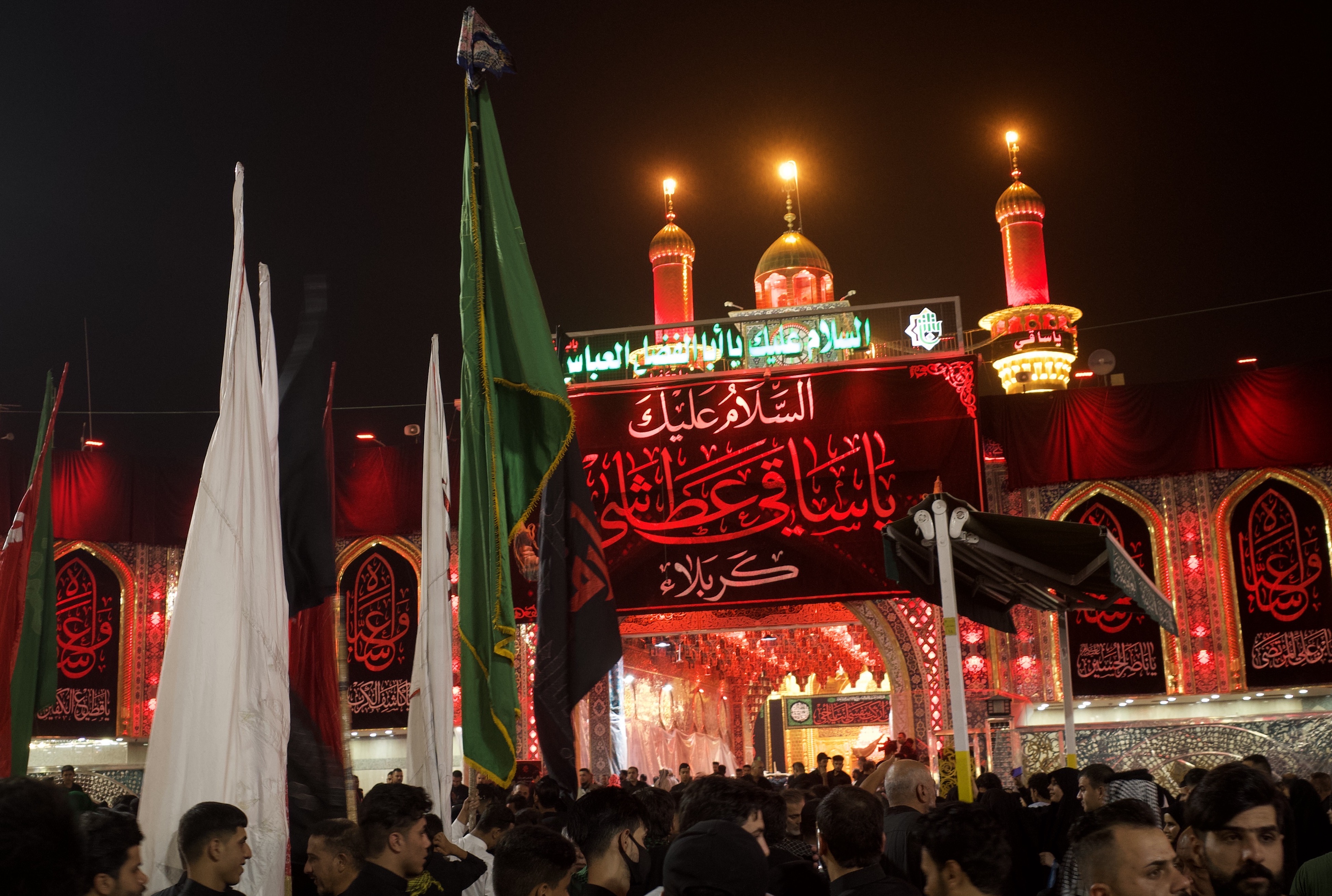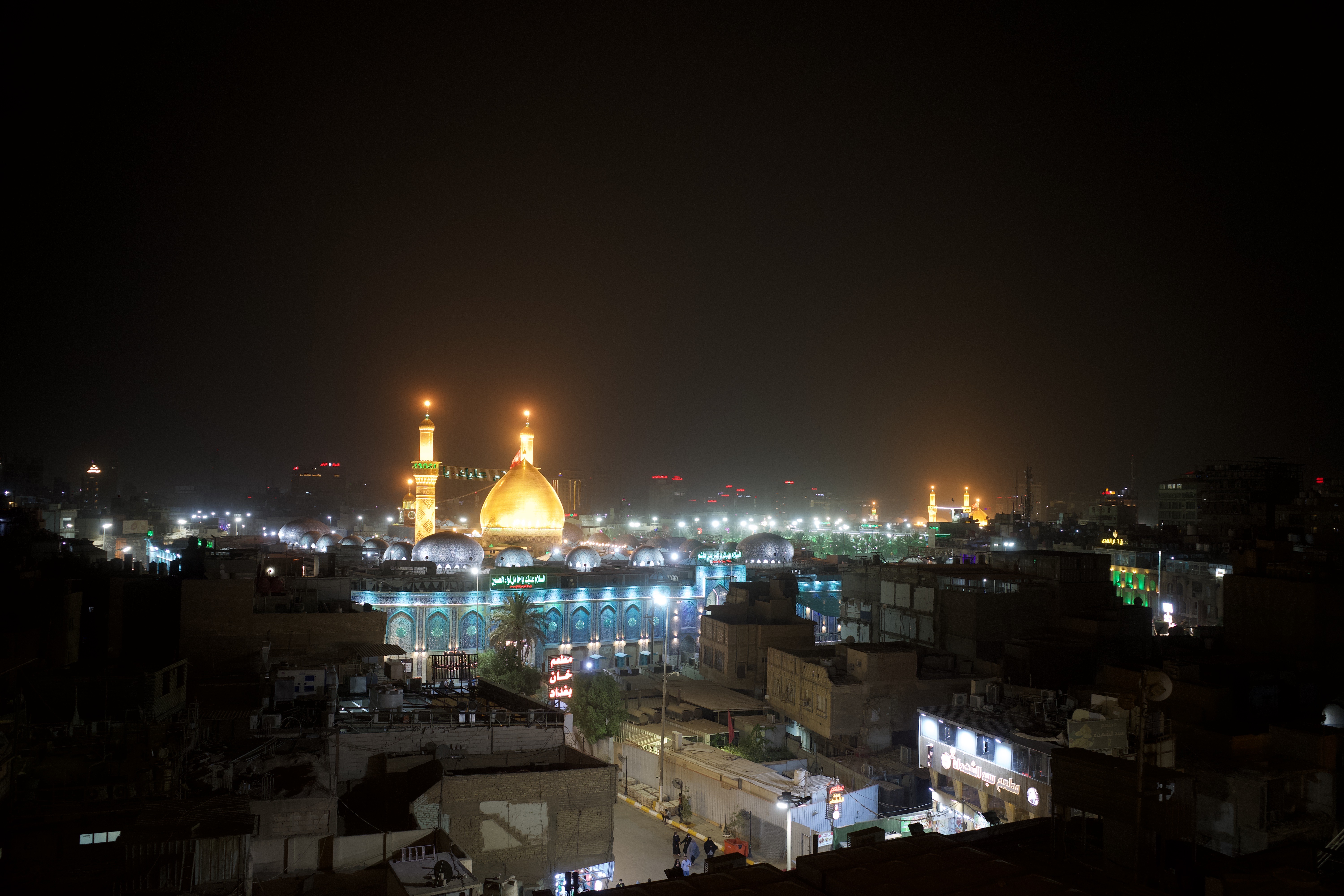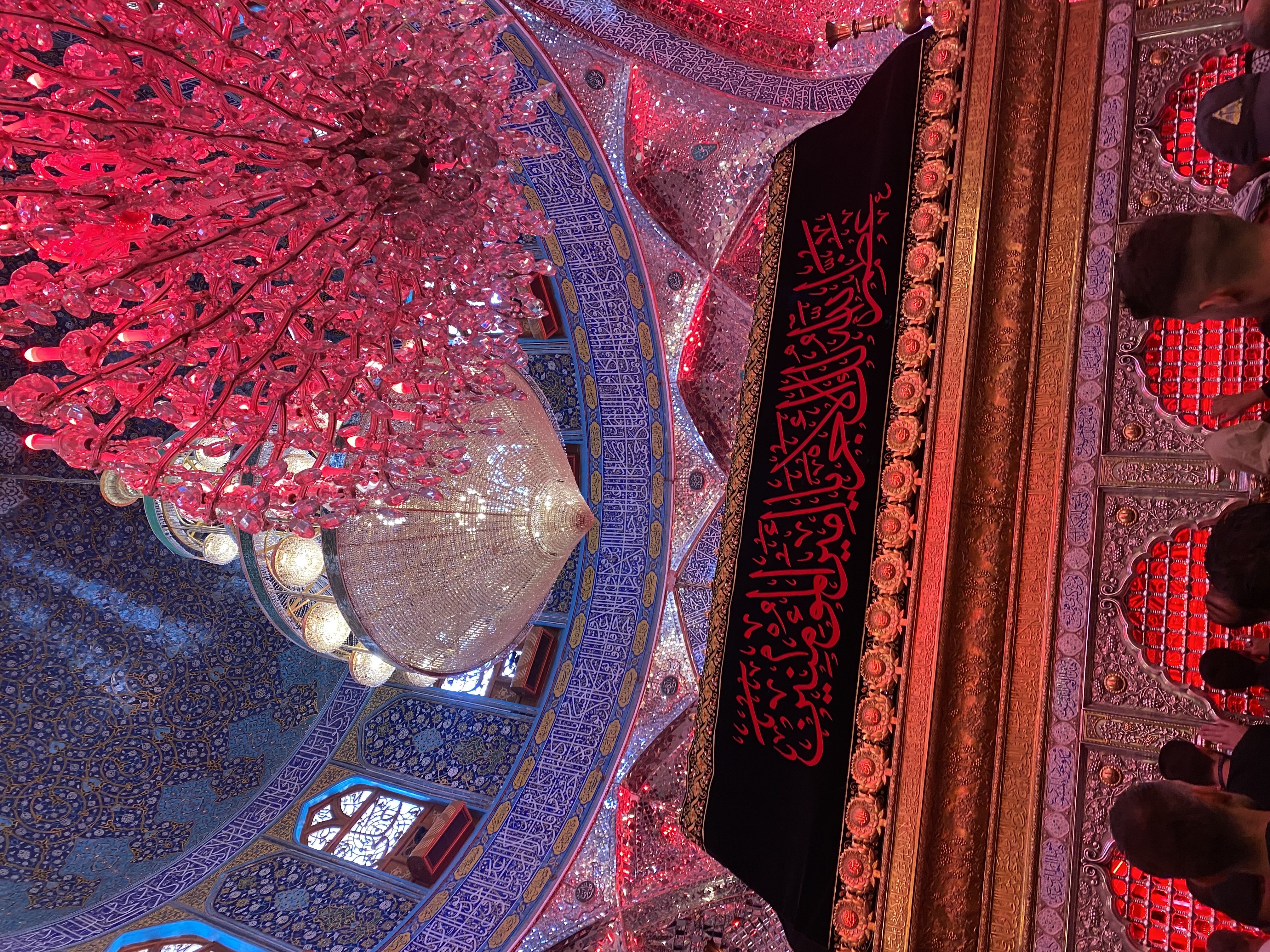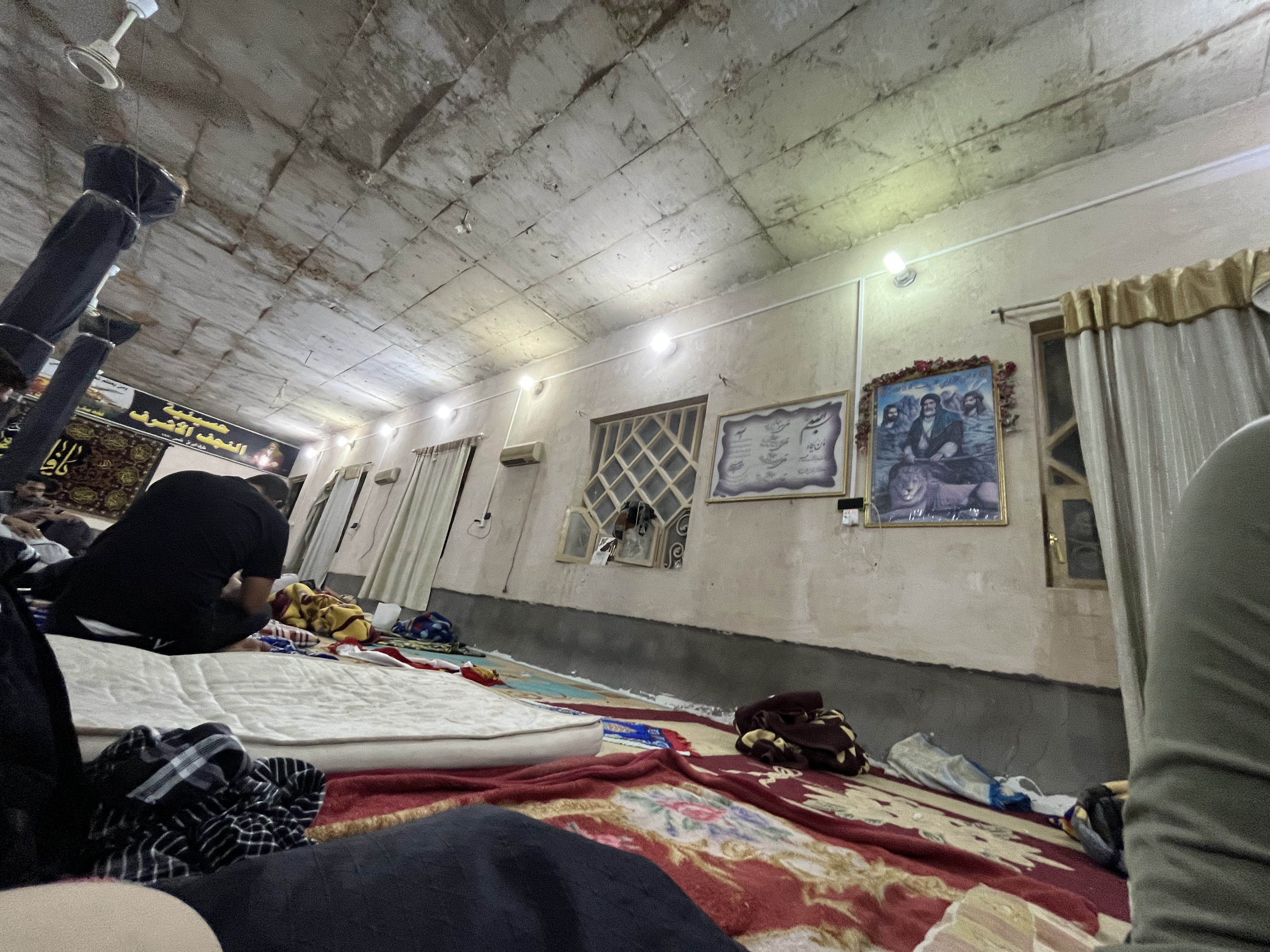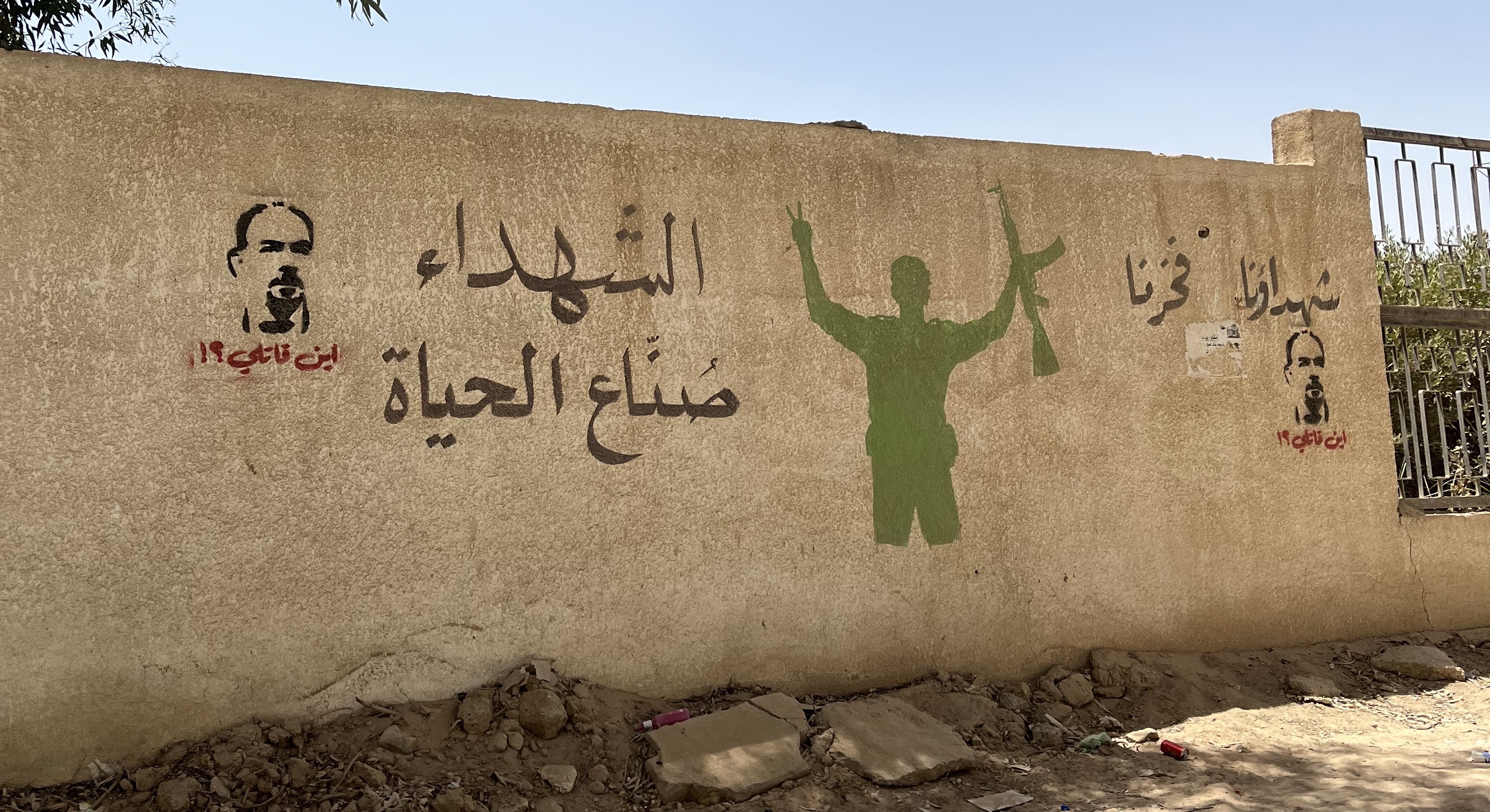On Karbala
Table of Contents
1. Shi'a Rituals and Clerical Authority
From August 2021 to May 2023, I dedicated my time to researching Shi'a rituals in Iraq, mainly in Karbala and Baghdad. This included participating in the annual Arbaeen pilgrimage between Najaf and Karbala.
The full thesis is found at https://git.sr.ht/~peixian/Kevo-Thesis/tree/main/item/thesis.pdf. This page contains additional notes and photos that complement the thesis.
Previously, I wrote about a specific ritual called radat (الردات الكربلائي سياسي), describing the ritual that I was focusing on. It turns out there's more than just that, I found interesting interactions between this ritual and the history of Karbala. There's also some more photos of Iraq in general here.
2. Karbala
Karbala is a city of dual significance: it's a primary shrine city in Iraq (alongside Najaf) and the historical site of the Battle of Karbala, which saw the last stand of Hussein, one of the 12 Imams in Shi'a Islam. The city houses shrines to Imams Abbas and Hussein, with Hussein's shrine marked by prominent golden domes in the foreground and Abbas' shrine to the right.
Besides being a shrine city, Karbala is also just a normal, regular city, with a nightlife and instagram-y cafes. One of my favorite haunts was NOVA cafe, a cafe decorated with an austere interior.
Otherwise, day-to-day life in Karbala proceeded as normal. I stayed in a hovel with basically no running water and only a few hours of electricity, but since it was only for two months I managed to skate by without too much trouble by sleeping in the shrine most of the time. Thankfully the shrine janitors were kind enough to let me up to the rooftop to sleep during those hot summer nights.
3. Other Sites
I ended up visiting a bunch of other sites as well, especially the Imam Kathim shrine in Baghdad, the Imam Askari Shrine in Samarra, as well as Imam Ali in Najaf, completing the circuit of all the imams in Iraq itself.
Baghdad is interesting because Baghdad is a world unto its own. Baghdad is a massive city, with at least 10 million residents in there now. Karbala sits at less than half a million, which means that the culture is far more conservative and touristy. You see a huge difference in the areas of Karbala around the shrines versus the areas where Karbala residents actually live in.
It's also interesting to compare the growth of religious institutions in Karbala vs Baghdad. In Baghdad, while the city is obviously religious, there's competiting business interests that prevent the shrine bureacracies from gobbling up more and more land. That competition doens't exist in Karbala, which means that there's almost a gigantic octopus of a bureacracy that's eating more and more land in the old city. In fact, there's quite a bit of current day reclamation of land that's being bought up by the shrine institutions for expansion.
Shrine architecture is its own phenomenon as well, shrines in Iraq are grand, opulent things, although each has their own style. The shrine of Ali is more reserved in nature and open air, while Hussein and Abbas are fully enclosed.
Salar Abdoh said in his book that grand mosques are bullies, it is the smaller mosques that reek of weariness and shoelessness that provide a place to rest your head, and I think that's really true. Visiting any of the Imams involves a ritual of visitattion, their tombs are grand and humbles you.
The tomb of Imam Ali. Najaf, 2021.
During the annual pilgrimage of Arbaeen, pilgrims walk from all over to Karbala to pay their respects to Imam Hussein. I walked this in August 2022 (alongside the sweltering Iraq sun), but along the way I stayed in many tents and houses (called mokwebs) like the one below during the three day walk. I even passed by the Thai mokweb, which was run by a bunch of Shi'as from Thailand who came to offer food and shelter for pilgrims.
One of the biggest problems during this project was my Arabic. My Arabic when I first arrived in Iraq was fundalmentally not good, I was literate and I could speak, but definitely not at a level where I would consider it to be fluent. It took a while for me to actually find stable ground with it. What I realized during this whole experience was that language is something that getting thrown headfirst is probably the best way to go, since this type of work requires immersion. Learning in the field, even though I realized that a lot of my peers had better Arabic at the start, was one of the most interesting things because I was able to piece together my learnings as I learned and adapted more cultural elements.
Arabic's a funny language too, I previously wrote about learning Arabic in Qasid in Jordan, but Iraqi Arabic and Jordanian Arabic are definitely different beasts. When I went to Jordan during Ramadan to take a break from Iraq, I managed to mess up a few social interactions by acting like an Iraqi, which pissed a few people off. Culturally, like any language, there's lots of stuff to mess up, and I realized that struggling through it in Iraq was really a learning experience like no other.
Overall, like any complete piece of work, I think my thesis is flawed in many ways, and focuses mostly on a singular understanding of clerical authority in Karbala. However, the experience I had over the course of a year and a half in Iraq was honestly nothing short of incredible, bouncing around Iraq with my friends, being thrown into the fire and learning to speak Arabic, and fundamentally learning about how another culture works was one of the most incredible things that ever happened to me. There's something to be said about how sometimes you feel like you're held in the grips of history, and that's what I really feel like happened in Iraq. I can't wait to return.
